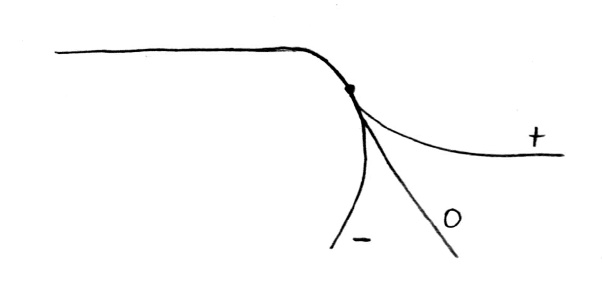Positive stability

In vehicle design, it's common to talk about positive and negative stability. Positive stability is the tendency of the vehicle to return to a neutral state when disturbed. In most aircraft, if you point the nose up, the forces on the wings and tail will push it back down. Push it down and it will try to come back up. A car's steering generally has the same quality: when you turn the steering wheel, the car will try to turn back. If you let go, it will return to neutral. If it doesn't do that, it probably needs to be serviced.
I think it's important to think about your own systems in this way too. If the way you do something gets harder to control the more it goes off track, you've got a system with negative stability, and that can be very dangerous. In a sense, my description of atonement is an example of a negatively stable system. If you fail, having to atone for your previous mistakes as well as continuing to not fail is more work than just not failing on its own. That means the more you fail, the harder it gets to stop failing.
The worst case of this is when you miss a deadline and push out the deadline. In isolation this is fine, you had time T to do task X, now you have time T+n to do task X. In reality, unless this is the last task you ever do, you had time T1 to do task X and T2 for the next task Y. Now you still have the same total time, but with n units moved from T2 to T1. If your assessment for T2 was accurate, you now don't have enough time for task Y. Time to pull some more units from T3... The system gets more unstable the longer this goes on, even though the decision makes sense locally.
What you need instead is a way for the tasks to become easier the further behind you get. Either by cutting tasks, or by having alternate versions of those tasks that are less difficult. I've been trying that recently with my birdposts and it seems to be working better than trying to make up the time with regular posts. I've noticed that video games often do something similar by adjusting the difficulty if you're struggling.
Of course, even a badly aligned car or a negatively stable aircraft can be controlled by a skilled enough operator, where skilled enough sometimes means a computer. This doesn't really make negative stability any less bad, rather it just expands the scope of the system: the aircraft might be unstable, but the aircraft + flight control system is stable. Similarly, there might be unstable systems you deal with that are only stable because you are constantly supplying stabilising control inputs.
This is a dangerous state of affairs, doesn't scale well, and leads to cascading failures if you're the common stabilising factor in a lot of systems and you mess up. Better to have systems that remain stable without your constant vigilance. A well-trimmed aeroplane in smooth air will continue to fly straight and level with your hands off the controls entirely. Can you say the same about the other things in your life?